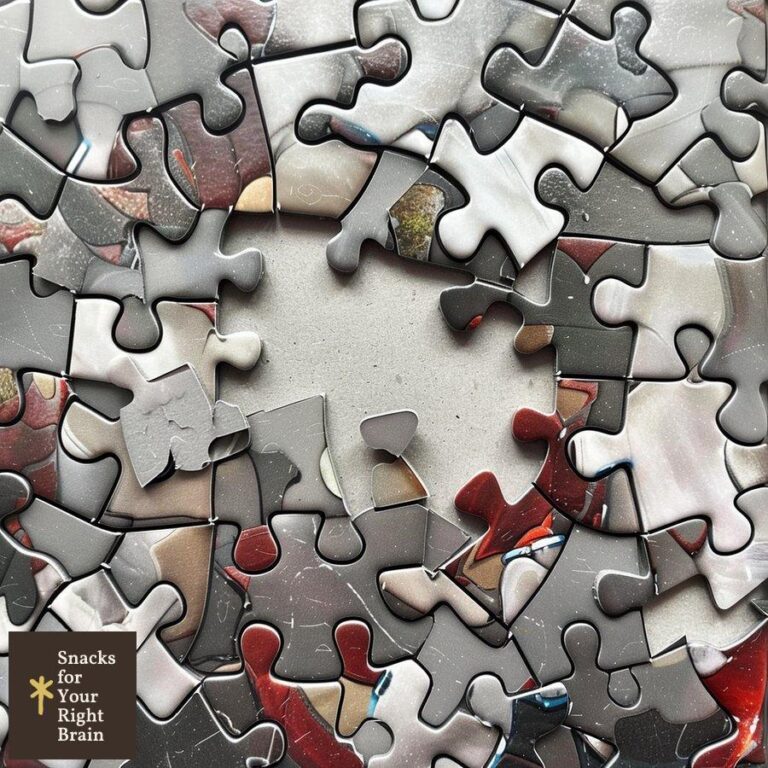What Is the Minimum Length for a Short Story Collection
Short story collections occupy a unique space in the literary world, offering readers bite-sized narratives that can be consumed in a single sitting while still providing the depth and complexity of longer works. For writers, these collections present an opportunity to showcase their versatility and explore multiple themes or characters within a single volume. However, one question that often arises for both aspiring and established authors is: What is the minimum length for a short story collection?
How long should a short story collection be?
The length of a short story collection is not governed by strict rules but rather by a combination of industry standards, reader expectations, and practical considerations. Generally, a short story collection should be long enough to provide a satisfying reading experience while also meeting the requirements of publishers and booksellers.
A typical short story collection ranges from 40,000 to 80,000 words. This word count translates to approximately 160 to 320 pages in a standard printed book format. However, it’s important to note that these figures are not set in stone and can vary depending on several factors.
Minimum Length Considerations
The minimum length for a short story collection is often influenced by:
Publisher Requirements: Traditional publishers may have specific word count expectations for the collections they acquire.
Reader Expectations: Readers typically expect a collection to offer enough content to justify its purchase price and provide a substantial reading experience.
Story Count: The number of stories included in the collection can affect its overall length.
Individual Story Lengths: The length of each story within the collection contributes to the total word count.
While there is no universally agreed-upon minimum length, a collection should generally contain at least 40,000 words to be considered a full-length book by most industry standards. This length allows for a sufficient number of stories to create a cohesive collection while also meeting reader expectations for a satisfying volume of content.
What are the industry standards for collection length?
Industry standards for short story collection length can vary depending on the publisher, market, and genre. However, there are some general guidelines that many publishers and literary agents follow when considering short story collections for publication.
Traditional Publishing Standards

In traditional publishing, short story collections typically fall within the following word count ranges:
Novella-in-Flash or Linked Short Story Collection: 20,000 – 40,000 words
Standard Short Story Collection: 40,000 – 80,000 words
Longer or More Comprehensive Collections: 80,000 – 120,000 words
These ranges are not strict rules but rather common expectations within the industry. Publishers may be more flexible with established authors or collections that have unique selling points.
Small Press and Independent Publisher Standards
Small presses and independent publishers often have more flexibility when it comes to collection length. They may be willing to consider shorter collections, especially for debut authors or experimental works. Some small presses specialize in chapbooks or mini-collections, which can be as short as 15,000 to 30,000 words.
Anthology Standards
Anthologies, which feature stories from multiple authors, often have different length standards:
Short Anthologies: 40,000 – 60,000 words
Standard Anthologies: 60,000 – 100,000 words
Comprehensive Anthologies: 100,000+ words
It’s important to note that these standards can vary based on the anthology’s theme, target audience, and publisher preferences.
Digital Publishing Standards
Digital publishing platforms have introduced more flexibility in collection lengths. E-books and self-published collections can range from very short (under 20,000 words) to very long (over 120,000 words). However, even in digital formats, collections that fall within the traditional 40,000 to 80,000-word range tend to be more marketable and align better with reader expectations.
Considerations for Authors
When aiming to meet industry standards, authors should consider:
Story Count: A collection typically includes 8-12 stories, though this can vary.
Individual Story Lengths: Short stories generally range from 1,000 to 7,500 words, with flash fiction being under 1,000 words.
Cohesion: The collection should feel complete and thematically unified, regardless of its total word count.
Market Positioning: The length should align with the intended market and readership.
By understanding these industry standards, authors can better position their collections for success in the publishing world while also meeting reader expectations for a satisfying volume of content.
How do publishing formats affect minimum length requirements?

The publishing format chosen for a short story collection can significantly impact the minimum length requirements. Different formats cater to various reader preferences, distribution channels, and production costs, all of which influence the acceptable length of a collection.
Print Publishing
Traditional print publishing has the most stringent length requirements due to production costs and physical limitations.
Hardcover Books: Typically require a minimum of 50,000 words to justify production costs and retail pricing.
Trade Paperbacks: Generally range from 40,000 to 80,000 words, with some flexibility for shorter collections.
Mass Market Paperbacks: Usually contain 60,000 to 100,000 words due to their smaller size and higher page count.
Print publishers consider the spine width, as books need to be thick enough to display the title and author name on the spine for shelf visibility.
E-book Publishing
E-book formats offer more flexibility in terms of length requirements:
Standard E-books: Can range from 20,000 to 120,000+ words, with the sweet spot being 40,000 to 80,000 words.
Novellas and Mini-Collections: Digital formats allow for shorter works, typically 15,000 to 40,000 words, to be published as standalone e-books.
Serialized Collections: Some authors release individual stories or small groups of stories as separate e-books, later compiling them into a full collection.
The lack of physical production costs allows for greater variation in e-book lengths, though very short collections may still face pricing and perceived value challenges.
Audiobook Publishing
Audiobook formats introduce unique considerations for collection length:
Standard Audiobooks: Typically range from 3 to 15 hours in length, which translates to roughly 30,000 to 150,000 words.
Short Audio Collections: Some publishers produce shorter audiobooks of 1-3 hours, suitable for collections of 10,000 to 30,000 words.
Audiobook producers often prefer longer collections to justify production costs and provide better value for listeners.
Print-on-Demand (POD) Publishing
POD technology has introduced more flexibility for print formats:
Minimum Page Count: Most POD services require a minimum of 24-48 pages, which translates to roughly 6,000 to 12,000 words for a short story collection.
Optimal Length: Despite the lower minimum, POD books between 100-300 pages (25,000 to 75,000 words) tend to be more marketable and cost-effective.
POD allows for more experimentation with collection lengths, but very short collections may still face challenges in pricing and perceived value.
Chapbooks and Limited Editions
Specialized formats cater to shorter collections:
Chapbooks: Typically contain 20-40 pages of poetry or very short fiction, ranging from 5,000 to 10,000 words.
Limited Edition Collections: May have more flexibility in length due to their niche market and collectible nature.
These formats often focus on artistic presentation and can justify shorter lengths through their unique production values.
Considerations for Authors
When choosing a publishing format, authors should consider:
Target Audience: Different formats appeal to different reader demographics.
Distribution Channels: Some formats may have limited distribution options.
Production Costs: Shorter collections may be more feasible in certain formats due to lower production costs.
Marketing Potential: Certain formats may offer better visibility or marketing opportunities for collections of specific lengths.
By understanding how different publishing formats affect minimum length requirements, authors can make informed decisions about how to present their short story collections to readers and navigate the various publishing options available to them.
What factors influence the minimum length of a collection?
The minimum length of a short story collection is influenced by a variety of factors that go beyond simple word count. Understanding these factors can help authors and publishers determine the appropriate length for a collection that meets industry standards, reader expectations, and artistic goals.
Publisher Requirements
Publishers often have specific guidelines for collection lengths based on:
Production Costs: Longer collections may be preferred to justify printing and distribution expenses.
Market Positioning: Collections may need to meet certain length requirements to fit into specific market categories or price points.
Imprint Guidelines: Different imprints within a publishing house may have varying length requirements for the collections they publish.
Reader Expectations
Reader expectations play a crucial role in determining collection length:
Perceived Value: Readers often associate length with value, expecting a certain amount of content for the price paid.
Reading Time: Collections should provide enough material for a satisfying reading experience, typically several hours of engagement.
Genre Norms: Readers of certain genres may have specific expectations regarding collection length.
Artistic Vision
The author’s artistic vision for the collection can influence its length:
Thematic Cohesion: The number of stories needed to fully explore the collection’s themes may affect overall length.
Story Arcs: If the collection features interconnected stories or a larger narrative arc, this may require a certain minimum length to develop fully.
Stylistic Choices: Experimental or unconventional storytelling techniques may impact the collection’s length.
Marketing and Distribution Considerations
Marketing and distribution factors can influence minimum length requirements:
Shelf Presence: Physical books need to be thick enough to display the title on the spine for bookstore shelving.
E-book Pricing Tiers: Digital platforms often have pricing tiers based on word count, which can affect the desired minimum length.
Audiobook Production: Longer collections may be preferred for audiobook formats to justify production costs and provide value to listeners.
Critical Reception
The potential for critical reception and awards can impact length decisions:
Review Consideration: Some publications or awards may have minimum length requirements for books they review or consider.
Comparative Analysis: Authors and publishers may consider the lengths of critically acclaimed or award-winning collections in the same genre.
Author’s Career Stage
An author’s career stage can influence the acceptable minimum length:
Debut Authors: May face stricter length requirements to prove their ability to sustain a full collection.
Established Authors: Often have more flexibility in collection length due to their existing readership and track record.
Mid-Career Authors: May need to balance meeting reader expectations with exploring new creative directions.
Production and Design Considerations
Physical aspects of book production can affect minimum length:
Paper Quality: The thickness of the paper used can impact the minimum number of pages needed for a viable book.
Typography and Layout: Font size, spacing, and overall design can affect how many words fit on a page, influencing the perceived length of the collection.
Cover Design: The desired cover design may require a certain spine width, indirectly affecting the minimum length.
By considering these factors, authors and publishers can determine an appropriate minimum length for a short story collection that balances artistic vision, market demands, and reader satisfaction. The interplay of these elements underscores the complexity of deciding on collection length and highlights the importance of a thoughtful approach to this aspect of book production.
How does genre impact collection length expectations?

Genre plays a significant role in shaping reader expectations and industry standards for short story collection lengths. Different genres have evolved distinct norms regarding the length of both individual stories and overall collections, influenced by factors such as narrative complexity, thematic depth, and reading habits associated with each genre.
Literary Fiction
Literary fiction collections often have more flexibility in length due to their focus on artistic merit and exploration of complex themes.
Typical Length Range: 50,000 – 80,000 words
Individual Story Length: 3,000 – 10,000 words
Collection Size: 8 – 15 stories
Literary collections may include longer, more introspective pieces that require more words to fully develop characters and themes. Readers of literary fiction often expect a substantial volume that allows for deep engagement with the material.
Genre Fiction (Science Fiction, Fantasy, Horror)
Genre fiction collections can vary widely in length, often depending on the specific subgenre and target audience.
Typical Length Range: 60,000 – 100,000 words
Individual Story Length: 2,000 – 15,000 words
Collection Size: 6 – 20 stories
Science fiction and fantasy collections may tend towards the longer end of the spectrum due to world-building requirements. Horror collections might include a mix of short, punchy tales and longer, atmospheric pieces.
Mystery and Crime
Mystery and crime collections often feature tightly plotted stories that can be effectively told in shorter formats.
Typical Length Range: 40,000 – 70,000 words
Individual Story Length: 2,000 – 8,000 words
Collection Size: 8 – 15 stories
These collections may include a mix of quick, twist-ending tales and more complex detective stories, allowing for a diverse reading experience within a relatively compact collection.
Romance
Romance collections can vary depending on the subgenre, from contemporary to historical or paranormal romance.
Typical Length Range: 50,000 – 75,000 words
Individual Story Length: 5,000 – 15,000 words
Collection Size: 4 – 10 stories
Romance readers often expect fully developed relationships within each story, which can lead to slightly longer individual pieces and potentially fewer stories in a collection.
Flash Fiction and Experimental Collections
Collections focusing on very short forms or experimental structures may have different length expectations.
Typical Length Range: 20,000 – 50,000 words
Individual Story Length: 100 – 1,500 words
Collection Size: 20 – 100+ stories
These collections may include a larger number of very short pieces, allowing for a high story count despite a potentially lower overall word count.
Young Adult (YA) and Middle Grade (MG)
Collections for younger readers often have specific length considerations based on reading level and attention span.
YA Collections:
– Typical Length Range: 40,000 – 70,000 words
– Individual Story Length: 2,000 – 8,000 words
– Collection Size: 8 – 15 stories
MG Collections:
– Typical Length Range: 30,000 – 50,000 words
– Individual Story Length: 1,500 – 5,000 words
– Collection Size: 10 – 20 stories
These collections often feature more concise storytelling while still providing engaging and age-appropriate content.
Considerations for Cross-Genre Collections
Some collections may blend multiple genres or defy easy categorization. In these cases, authors and publishers might consider:
Target Audience: Which genre readers are most likely to be interested in the collection?
Marketing Angle: How will the collection be positioned in the market?
Thematic Cohesion: How do the various genre elements contribute to the overall theme or concept of the collection?
Genre-Specific Factors Affecting Length
Pacing: Fast-paced genres like thrillers may allow for shorter individual stories and potentially more stories in a collection.
Character Development: Genres that prioritize deep character exploration may require longer individual stories.
World-Building: Genres like science fiction and fantasy may need more words dedicated to establishing unique settings.
Narrative Complexity: Genres that often feature intricate plots or multiple storylines may tend towards longer individual stories or overall collections.
By understanding genre-specific expectations for collection length, authors can better tailor their work to meet reader expectations and industry standards. However, it’s important to note that these are general guidelines rather than strict rules. Exceptional collections often find success by pushing boundaries and offering unique experiences that transcend typical genre conventions.
What is the typical word count range for a short story collection?

The typical word count range for a short story collection can vary, but there are generally accepted standards within the publishing industry. Understanding these ranges can help authors and publishers create collections that meet reader expectations and market demands.
Standard Word Count Ranges
Minimum Viable Collection: 40,000 – 50,000 words
Standard Collection: 50,000 – 80,000 words
Comprehensive Collection: 80,000 – 120,000 words
These ranges provide a general framework, but it’s important to note that there can be successful collections both above and below these figures.
Factors Influencing Word Count
Number of Stories: Collections typically contain 8-15 stories, but this can vary widely.
Individual Story Lengths: Short stories generally range from 1,000 to 7,500 words, with some extending to 10,000 words or more.
Genre Expectations: Some genres may tend towards longer or shorter collections.
Author’s Reputation: Established authors may have more flexibility in collection length.
Breakdown by Collection Type
Debut Collections:
– Typical Range: 50,000 – 70,000 words
– Considerations: Debut authors often need to prove they can sustain a full-length collection.






